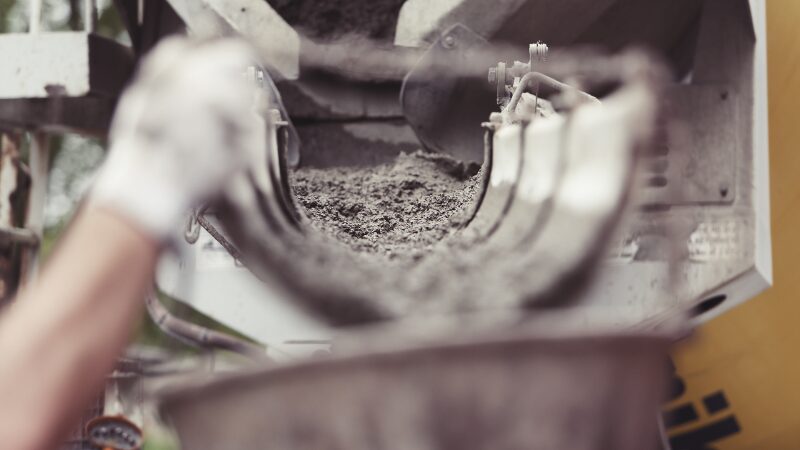Over the past few years, DIY projects have gained more and more popularity. As a result, enthusiastic DIYers can now find a huge collection of tutorials that explain how to complete a wide variety of DIY projects, ranging from small home improvements to houses built from scratch.
While almost anyone with some basic DIY skills can tackle a small home improvement project, specific structural repairs, including foundation repairs, are best left in the hands of experienced professionals. If you wonder why, an important thing to know is that not only are certain repair methods better suited to address specific foundation problems, but the type of concrete also plays a significant role in ensuring the quality and durability of the repair job.
Why the Type of Concrete Matters
Concrete is a versatile, strong, and durable building material that is typically made by mixing regular (Portland) cement, aggregate, and water. However, the proportions of these components can be changed and other chemicals, called admixtures, can be added to the standard mix in order to alter its basic characteristics. This way, manufacturers produce different types of concrete that can better meet specific performance requirements while also enabling contractors to stay on budget.
When foundation problems occur in a Houston home, choosing the right type of concrete for the repair will allow professionals to prevent further and recurrent damage. For instance, if a foundation issue is caused by specific chemicals in the soil, the type of concrete selected to fix the problem can ensure the repair will stand the test of time. As an example, the sulfates that are present in Houston soil can lead to heaving. In this particular case, using sulfate-resistant concrete for the repair will reduce the risk of future sulfate attacks on the structure. As this can significantly decrease the risk of heaving, the new concrete structure has a better chance of remaining intact throughout its lifespan.
In general, the best type of concrete for foundation repairs is the one that has a PSI rating of 3500. This type of concrete provides good workability and adequate strength for most foundation repairs. However, other concrete mix ratios can be recommended, depending on what the foundation repair specialist intends to achieve. To help you better understand the importance of choosing the right type of concrete for each foundation repair job, here are some of the concrete types our professionals use in the Houston-Galveston area.
-
Normal strength concrete – Normal strength or “regular” concrete is the most commonly used type of concrete and a good option for repairing foundations that don’t require extremely high tensile, compressive, bending, and/or shear strength. This concrete type uses cement, sand, and aggregates in a ratio of 1:2.5:3.
-
Reinforced concrete – Reinforced concrete includes steel rebar or welded wire mesh that increases its overall strength so that the resulting foundation repair will be better able to withstand different loads and stresses in medium and heavier construction, such as regular homes and townhomes. This type of concrete is usually used to repair or rebuild piers, pile caps, beams, and other foundation components that generally need higher resistance to tensile, compressive, and bending forces.
Rapid-hardening concrete – Also known as rapid-set concrete, this type of concrete is designed to harden rapidly. This characteristic makes it suitable for foundation repair projects that require the structure to attain strength faster. Our professionals use this type of concrete for projects with shorter time frames as well as during the winter and hurricane season when the weather can be more unpredictable. In addition to saving time, rapid-hardening concrete offers improved durability.
Precast concrete – Prepared and cast off-site in factory-controlled environments to ensure the highest quality possible, precast concrete elements, such as beams, piers, blocks, cylinders, and columns, are made with much attention given to the proportions of cement, aggregates, and admixtures. In general, precast concrete elements are used in new construction as well as in older homes where they can replace damaged components in order to stabilize foundations and make them structurally sound again.
Prestressed concrete – Prestressed concrete is made by combining high-strength concrete and steel. Because this type of concrete has enhanced compressive, tensile, bending, and shear strength, it can significantly reduce the risk of tension cracks in lower foundation elements of heavier structures, such as two-story homes.
Pumped concrete – This type of concrete is usually used to bring sections of foundations that have sunk or settled unevenly back to their original elevation. Also referred to as slabjacking, this repair method is recommended especially for slab-on-grade foundations where there is no room to maneuver under the house.
Regardless of its type, concrete is at the heart of all the foundation repair projects we complete at Allied Foundation. Since this material is key to ensuring the integrity and longevity of all the foundation repairs that we do, we always pay special attention to the type of concrete we select for each job. For information about the services we provide, feel free to contact our foundation repair consultants today!
{{cta(‘9436b080-a670-4840-8824-f6c38c7d2140’)}}


One Response
Great blog! It explains how choosing the correct concrete type is essential for successful and lasting foundation repairs.